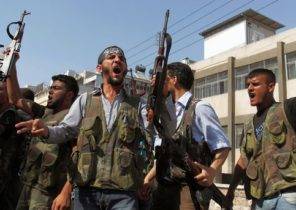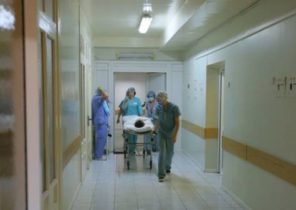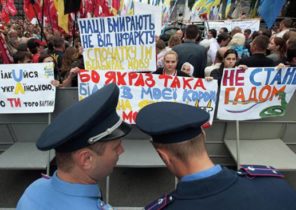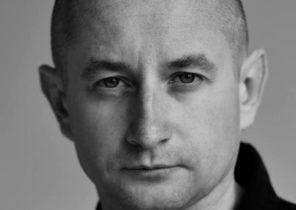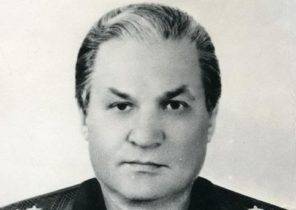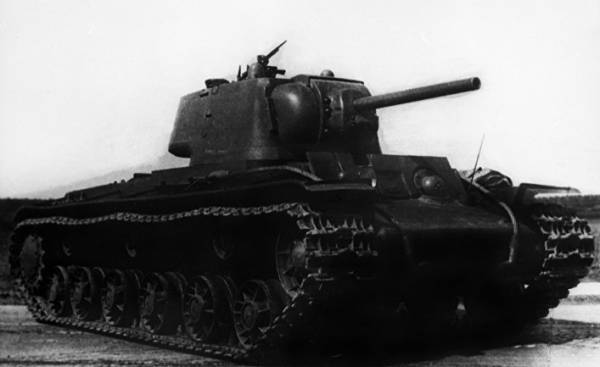
Soviet tanks gave the Finns a lot of unpleasant surprises in the years of the continuation War (Soviet-Finnish war of 1941-1944). Especially KV-1, or “Klim Voroshilov” was the tank that the Finns could not destroy.
Most of the tanks KV-1 was captured during the onset and during the battles in early 1942. Two “climate” was renovated and handed over Finland’s only tank division, and although their number was very modest, tanks came in handy.
Because among heavy tanks were only captured in the years of the Winter war T-28, the Finns called “mail trains”, small KV-1 and T-34 were the only modern battle tanks with good weapons.
KV-1 appeared in 1937, when the Soviet leadership came to the conclusion that the Red army needed a new heavy tank, designed to perform the task of breaking the front. Following the contest, there are three models: SMK, T-100 and KV-1. SMK and T-100 were dbasename heavy tanks, much easier on the KV-1 was only one tower.
All of these has been tested in the battles of the Winter war, but in the end KV coped with the tasks better than larger models. However, during these battles no one model could not cope with the task at the highest level, because on the test the test tanks did not go to the front.
But when they were at the forefront, the results were unsatisfactory. 55-ton QMS, stepped on a mine, left to wait for the end of the war in “no man’s land”. KV-1 hitting on the battlefield, did well as with anti-tank mines and anti-tank weapons.
From SMK and T-100 were refused, and the KV-1 was launched into serial production. Standard model equipped with 76-millimeter guns. Also created a heavier version of the KV-2, on a massive tower that is mounted 152-millimeter howitzer.
At the beginning of the continuation War (Soviet-Finnish war of 1941-1944 — approx. ed.), the Soviet Union tanks had 639 KV-1 and 300 tanks KV-2. Production of the KV-2 ceased in 1941 as a tank designed as a mobile bunker, was not suitable for blitzkrieg.
Both tanks were nevertheless a surprise for the army of Finland and the German army. Their almost impenetrable armor can withstand tank fire and a direct fire anti-tank guns and artillery fire.
One tank KV-2 for two days held back the advance of the sixth Panzer division in Lithuania. The tank was able to destroy only surrounding him and firing 88-mm anti-aircraft guns.
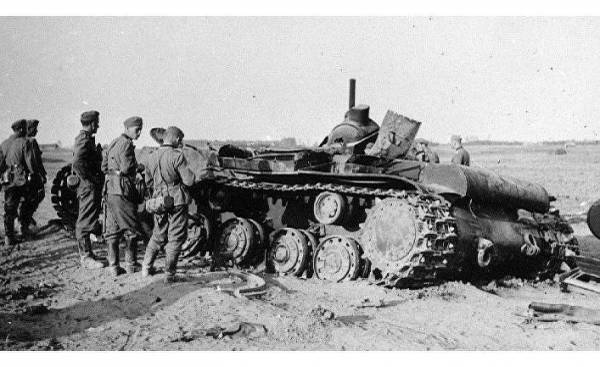 © Der Grossvater von Ra Wienenergie soldiers examine wrecked KV-1. The District Of Kaunas, 1941
© Der Grossvater von Ra Wienenergie soldiers examine wrecked KV-1. The District Of Kaunas, 1941
Difficulties enough the Finns. August 27, 1941, the attack of the 50th infantry regiment was stopped in front of the fortifications at Asseily, after which the Finnish troops came into the clutches of an unprecedented Soviet tank. KV-1 was more than 40 times fired at anti-tank guns, but the giant only shook off the shells from his neck and continued to shoot at the Finns.
Soon arrived and the second tank, and together the pair prevented the attempts of the Finns to advance and repel the attack. It did not help the shot from a heavy field guns. This angered the crew of a Soviet tank so much that they attacked the Finnish positions, captured the artillery point and towed gun on its territory.
Crucial for this KV-1 was a Finnish mines. However, the tank run into them before, but at some point, the crawler chain is still not passed. The crew fought to the last shell and, in the end, set fire to your tank.
Finnish troops could start moving, but burning almost 50-ton giant froze in the middle of the road, and it was impossible to move. In the end, the Finns had to change the route and bypass the tank.
KV-1 was an effective weapon on the Eastern front the first two years, and, despite the traditional for Soviet tank production and design problems, he did a good job, including on the battlefield. But the tanks there was a technical problem, and the greatest loss of KV tanks was out of fight, when the broken and damaged tanks did not have time to repair, and they fell into the hands of the advancing German troops.
In 1942 the Soviet military industry has managed to partially recover from the shock of the retreat and the evacuation of industries.
According to the analysis of the military leadership, these tanks, in the end, turned out to be not well suited for doing a quick war on the Eastern front. KV-1 was mechanically unreliable, slow and difficult to manage. In addition, its manufacturing cost is much more expensive than the production of the T-34. The main gun of a heavy tank was the same as the less effective and cheaper T-34.
Further development of the KV-1 eventually came down to simple math.
It has not been profitable, and cheaper T-34 proved as effective. T-34 could have more guarantee to get on the battlefield and more likely to go with him.
This has been noticed in Finland, when the KV-1 needed a thorough repair after 200 hours of operation, and the T-34 — only after 300 hours. Finnish “Klima” chronically short of spare parts.
In the KV series was developed and self-propelled artillery, and at the end of the war tanks is-2 and is-3. Heavy tanks with 122 mm gun were made in order to challenge the new German tanks “Tiger” and “Panther”.
In practice, the series of tanks KV and is tanks were the last that were manufactured in accordance with the concept of using the red army heavy tanks in the First world war. Heavy tanks were made by the thousands after the war, but only a few of the new types of heavy tanks was put into production.
In the 1950s, both in the East and in the West there is a new concept battle tank, which combines the mobility of a medium tank and the firepower and booking a heavy tank.
In Finland both “climate” and served after the end of the continuation War was during the Lapland war (military actions between Germany and Finland in September 1944 — April 1945 — approx. lane), and then used them for training. In 1955, the tanks are finally off.
